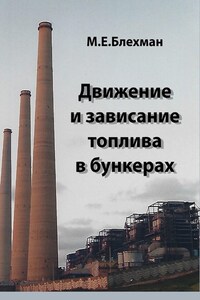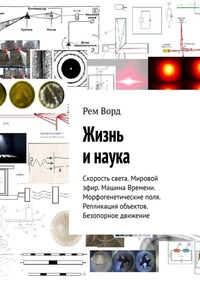Посвящение
Эту книгу я посвящаю памяти моей жены Блехман (Меламуд) Светланы Ароновны (1923—2017). Благодаря ей я начал и закончил эту книгу.
Аннотация
Большая часть углей, используемая в энергетике, имеет повышенную влажность, высокий процент мелких частиц и примеси породы, включая глину. Такие угли создают серьёзные трудности при их хранении в бункерах.
Результаты наблюдения поведения угля на моделях в большинстве случаев не могут быть перенесены на реальные бункера. В данной книге впервые движение и зависание углей изучалось на реальных бункерах (более 80 бункеров 37 электростанций).
Поведение угля в бункерах определяется его сыпучестью, но, в отличие от других авторов, градация сыпучести топлив основана на единой физической величине τ>0 (начальное сопротивление сдвигу материала), а необходимость и объём рекомендуемых мер определяется группой сыпучести.
В ходе обследования обнаружены неизвестные ранее процессы:
1. Изменение скорости и диаметра потока угля по высоте (глубине) бункера.
2. Наличие смежных потоков и этапы образования массового потока.
3. Наличие «вторичного» бункера и зон внутреннего сдвига.
4. Замерены углы сдвига угля и установлено их изменение по глубине бункера.
5. Изучен процесс и условия само обрушения топлива.
6. Установлены формы потока для углей различной сыпучести.
7. Рассматривается узел бункер – питатель.
8. Определена эффективность различных методов улучшения работы бункеров.
9. Рекомендуемые меры основаны на указанной градации топлив. (Каждой группе сыпучести рекомендуются свои мероприятия.) Они включают эксплуатационные и технические меры, эффективность которых проверена на практике.
При выдаче рекомендаций учитывается минимальная стоимость и простота обслуживания.
Coal Flow and stagnancy in Power Station bunkers
Blechman M.E., Engineer.
Existing theories on the flow of coal as bulk material in bunkers are based on observations of models and shear tests of the fuel under laboratory conditions. While burning highly moist and coalescent coals such observations and measurements do not correspond to the conditions existing in real bunkers.
This book presents the results of observations of the flow and stagnancy of coal, as a unified process, in real bunkers at more than 23 power stations. The goal of the investigation was to study of processes occurring in the bunkers with the purpose of developing effective measures for solving problems of stagnancy on the walls and the arching of fuel in the outlets of the bunkers.
The program included: collection of data on changes in the moisture content of the coal during different seasons of the year; observations of fuel evacuation; determining the stagnancy zones and their sizes for various levels of moisture content of the fuel; recording and analyzing the processes that occur in the bunker.
Method: measurement of the configuration of the fuel level in the bunkers during its evacuation; measurement of the rate of decrease in fuel levels and the flow velocity in the flow zone of coal; calculation of the main flow diameters from the measured fuel velocity and flow rate; determination of the effective volume of the bunker; calculation of the initial resistance to shear τ0 based on measurements in real bunkers.
Results:
1. A grading of fuels by flowability is proposed.
2. A relationship was found between fuel flowability and the following processes:
a. Variations in the velocity and diameter of the coal flow along the depth of the bunker.
b. The stage at which contiguous flows and mass flow form.












